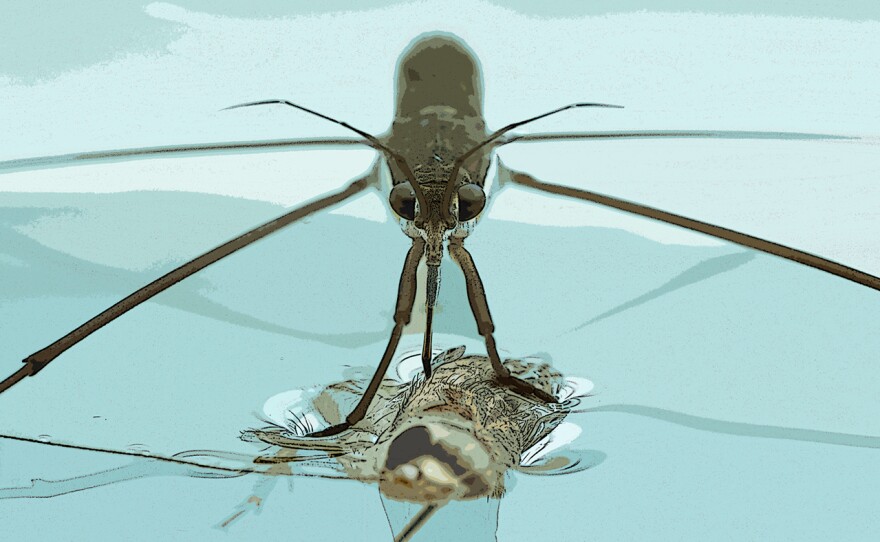Entomologist Dr. Art Evans and VPM radio producer Steve Clark discuss water striders and explore the science behind their ability to “walk on water.”
Walk along the edge of any quiet body of water and you are bound to see water striders. Also known as pond skaters, pond skimmers and wherryman, these true bugs are best known for their ability to glide, hop or jump across the water’s surface. Water striders accomplish this feat by having relatively slender bodies, elongated legs and small, hydrophobic hair-like structures called microsetae that all help them to take advantage of the membrane-like quality of the water’s surface tension. The dense, hydrophobic microsetae under their bodies and feet keeps them dry and prevents them from sinking.
Water striders spend nearly their entire lives on the surface of open water. Some species prefer small, quiet pools, while others occur on lakes. Others live on moving waters and are found on streams and rivers. A few species, known as sea skaters, are marine and are adapted for living among coastal mangroves or out on the open ocean.
Water strider mouthparts are adapted for piercing and sucking the bodily fluids of insects and spiders trapped on the water’s surface. Their front legs are used to detect the surface ripples created by struggling prey, while their middle and hind legs are used for rowing and steering, respectively. Each of their six feet rests inside a small dimple on the water surface that often casts shadows on the bottom. The backward and downward movement of the middle legs creates dual vortices beneath the dimples under the middle feet that propel the insect forward.
Some species of water striders exhibit wing polymorphism and can have long, medium or short wings, if they have wings at all. Winged species can escape unsuitable habitats and search for new bodies of water. Wingless water striders inhabit lakes, rivers and other stable habitats where they stay put and reproduce.
Females attach their eggs to submerged rocks and vegetation or floating objects. The nymphs resemble the adults in both appearance and behavior and undergo five nymphal stages. Development from egg to adult takes about two months or more, depending on the temperature of the water.
Water striders communicate with one another with species-specific surface waves produced by one or more pairs of their legs. Males rely on these signals to attract females, but both sexes produce them during courtship. These signals help water striders to establish territories and facilitate species recognition.
Here's a fun STEAM (Science, Technology, Engineering, Arts, Math) activity that provides instructions for building your own water strider.


